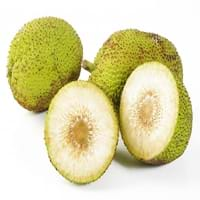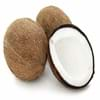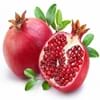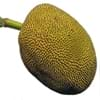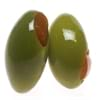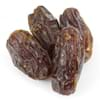Health Benefits
Cancer prevention, Diarrhea treatment, Muscle pain relief, Piles treatment, Prevents constipation, Skin cleansing, Ulcer treatment
Cancer prevention, Heart care, Maintains healthy cholesterol level, Treatment of skin Diseases
General Benefits
Controls blood pressure, Digestive aid, Maintains healthy cholesterol level, Strengthens bones
Boosts immune system, Digestive aid, Helps in weight loss, Maintains healthy cholesterol level
Skin Benefits
Anti-aging benefits, Hydrates skin, Skin rejuvenation
Anti-aging benefits, Skin rejuvenation, Treatment of skin diseases
Hair Benefits
Prevents hair loss, Shiny hair, Softening mask
Protects hair, Regulates hair growth, Treatment of dandruff
Allergy Symptoms
Abdominal pains, Decrease in blood pressure, Dizziness, Hives, Itching of mouth, Lightheadedness, Swelling, Swelling of mouth, tongue or lips, Weak or racing pulse, Wheezing
Hives, Inflammation of nose, Swelling of mouth, tongue or lips
Side Effects
Headache, Intense headache, Tooth decay
Allergic reaction
Best Time to Eat
As a snack in the late afternoon, Don't consume at night and before bed, Eat the fresh ones, avoid mixing with any other foods, don't eat after meal.
Along with meal, As a snack in the late afternoon, Don't consume at night and before bed, Don't eat after meal
Vitamin B5 (Pantothenic Acid)
Vitamin C (Ascorbic Acid)
Vitamin K (Phyllochinone)
Phytosterol
Not Available
Calories in Fresh Fruit with Peel
Not Available
Calories in Fresh Fruit without Peel
Calories in Frozen Form
Not Available
Calories in Dried Form
Not Available
Calories in Canned Form
Not Available
Calories in Jam
Not Available
Type
Berry, Tropical
Fruit vegetable, Tropical
Season
All seasons
All seasons
Varieties
Cavendish Bananas, Lady Finger Bananas, Pisang Raja, Williams Bananas and Cooking Bananas
Koqo, Tamaikora, Temaipo, Uto Kuro, Samoa, Buco Ni Viti and Kulu Dina
Color
Green, Yellow
White, Yellow
Shape
Curving Cylinder
Oval
Origin
Papua New Guinea
South Pacific
Soil Type
Well-drained
Loam, Sand, Sandy loam, Well-drained
Climatic Conditions
Warm
Humid, Rainfall, Warm
Facts about
- As bananas contain potassium-40 which is radioactive isotope of potassium, bananas are radioactive.
- Bananas float in water.
- There are around 1000 varieties of bananas.
- Eating this fruit will cheer you up.
- The milky sap of breadfruit tree is used as glue & bark is used to make papers.
- Breadfruit tree produces 1st fruit after 2-3 years from planting & remains productive for decades.
- The seeds of breadfruit are edible.
Top Producer
India
Jamaica
Other Countries
Brazil, Cameroon, China, Colombia, Ecuador, Ghana, Indonesia, Philippines, Uganda
Africa, India, United States of America
Top Importer
Europe
United States of America
Top Exporter
Ecuador
Jamaica
Botanical Name
Musa acuminata and Musa balbisiana
Artocarpus altilis
Synonym
Musa × dacca , Musa × sapidisiaca , Musa × sapientum
Artocarpus communis or Artocarpus incisa
Subkingdom
Tracheobionta
Tracheobionta
Division
Magnoliophyta
Magnoliophyta
Class
Liliopsida
Magnoliopsida
Subclass
Liliidae
Magnollidae
Order
Zingiberales
Rosales
Species
M. acuminata , M. balbisiana
A. altilis
Generic Group
Banana
Mulberry
Compare Banana and Breadfruit
It is important compare Banana and Breadfruit as both the fruits have a different nutritional value. Their comparison can be done on the basis of their vitamin and mineral content, calories, benefits as well as characteristics, making it easier for us to choose the best fruit for our diet. Their general health benefits are as follows:
Banana Benefits: controls blood pressure, digestive aid, maintains healthy cholesterol level and strengthens bones.
Breadfruit Benefits: boosts immune system, digestive aid, helps in weight loss and maintains healthy cholesterol level.
Fruits are also used as a remedy for various hair problems. The hair benefits of Banana are: prevents hair loss, shiny hair and softening mask and hair benefits of Breadfruit are: protects hair, regulates hair growth and treatment of dandruff. Some fruits are known to cause allergic reactions. The allergy symptoms of first fruit are: abdominal pains, decrease in blood pressure, dizziness, hives, itching of mouth, lightheadedness, swelling, swelling of mouth, tongue or lips, weak or racing pulse and wheezing and the symptoms of second fruit are: hives, inflammation of nose and swelling of mouth, tongue or lips. Get sorted Banana vs Breadfruit comparison with the help of fruit comparison tool by fruitvs.com.

